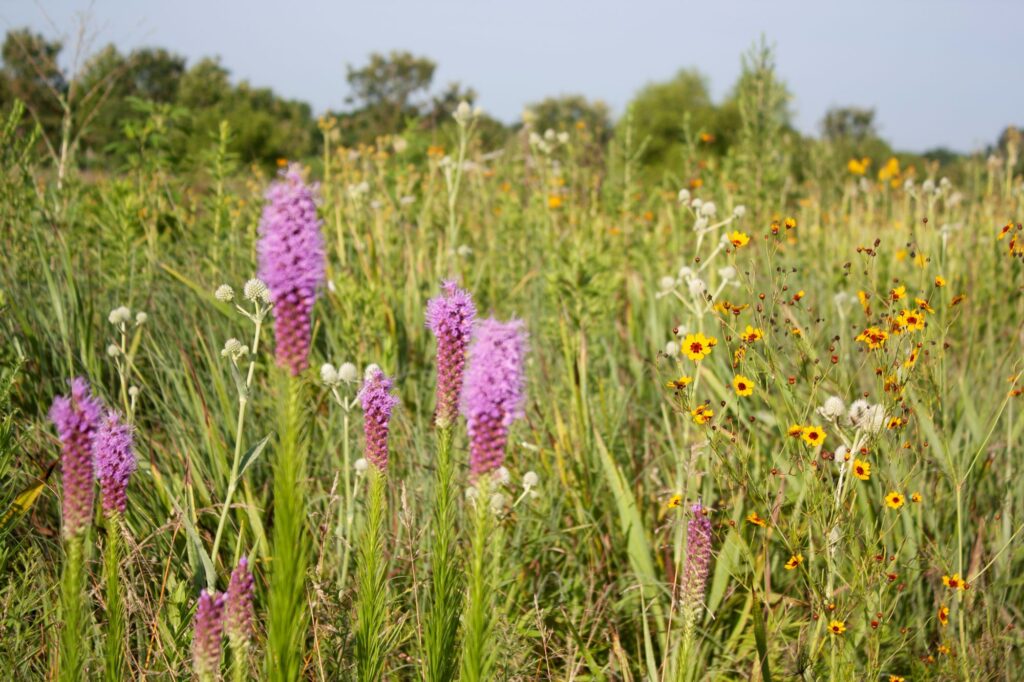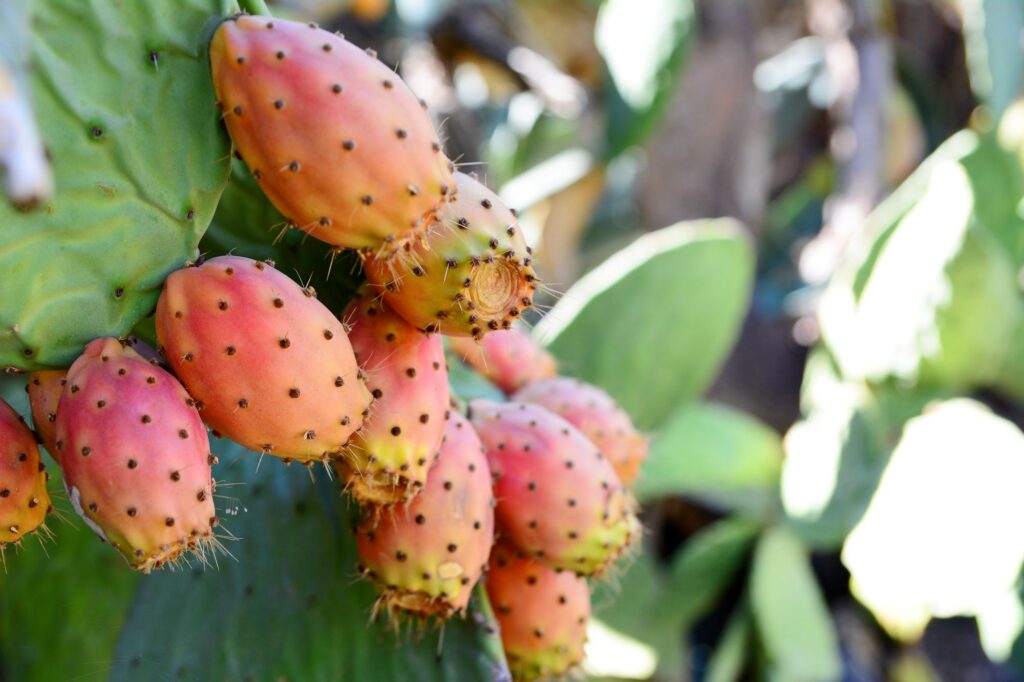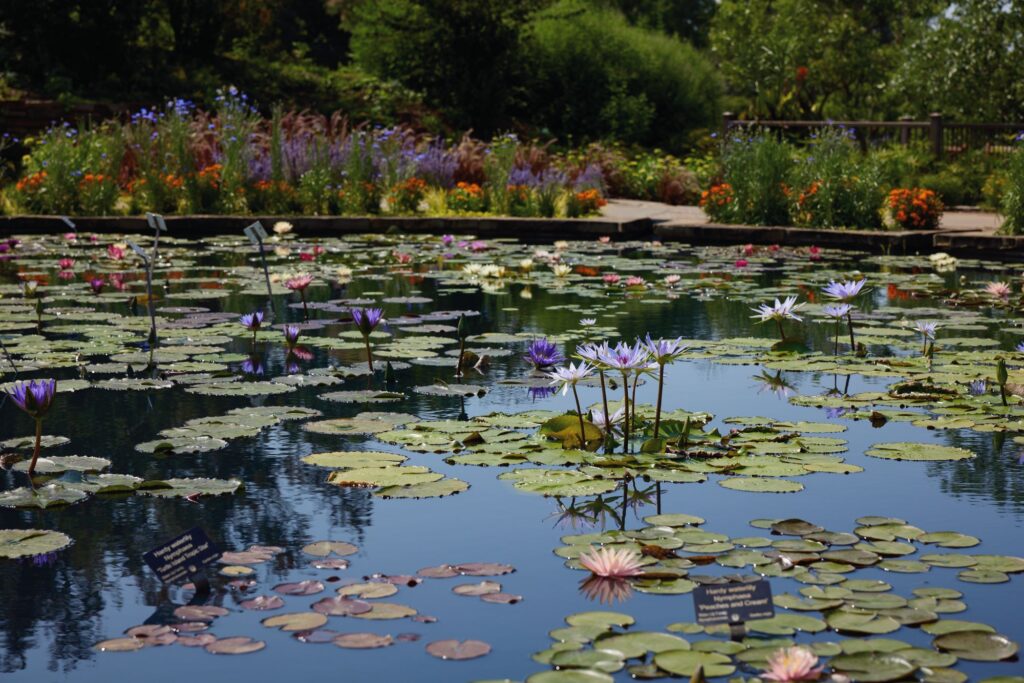
Daffodils are often considered the herald of spring’s growing season, brightening landscapes with their blooms. Early each spring, hundreds of bulbs pop up at Kansas City’s botanical garden! Powell Gardens’ collection of 165 daffodil cultivars will be celebrated during Daffodil Days (March 27-April 7, 2024).
What is a daffodil?
The botanical name for daffodils is Narcissus. Daffodils are classified in two systems of organization.
- Thirteen divisions based on bloom structure and number of flowers
- An alphabetical code based on the colors of their perianth (petals) and corona (center cup)
In the 1950s, the Royal Horticulture Society finalized the system of divisions into the 13 divisions that we use today to separate daffodils based on their form and origin.
Daffodils are only visible during the spring months. Not all daffodils bloom at once. Each daffodil cultivar has a unique bloom time, ranging between late winter and early spring. Daffodils require a period of cold time (around 35-45 degrees Fahrenheit) to set their roots.
History of Daffodils
Daffodils were spread across Europe by the Romans who believed they had medicinal properties. At that time, the plants were used topically to treat tumors, painful joints, and other external wounds. Later, it was discovered that they are toxic. In fact, all parts of a daffodil are toxic to humans. Sap from the leaves can cause skin irritations and ingestion can cause nausea and vomiting. Because of their toxicity, deer and squirrels leave them alone. This makes them unlike other spring flowering bulbs and a great addition to gardens!
Eventually, daffodils became widely popular in England where they were studied and cultivated into many of the varieties we love today. These plants were later spread to North America.
Daffodil Divisions
There are 13 divisions used to separate daffodils. During Daffodil Days (March 27-April 14), look for a daffodil division display near the Visitor Center. The 14 containers represent all 13 daffodil divisions. (Division 11 is split into two groups!) The daffodils in these containers were potted in the fall and were forced in Powell Gardens’ greenhouse to bloom in time for Daffodil Days. Each division of daffodils represents the unique form and origin of the plants. Learn about each division below!
Division 1: Trumpet Division
Exemplified by Narcissus ‘Lorikeet’ Y-P
‘Lorikeet’ has one flower to a stem and the corona (cup) is longer than the perianth (petals and sepals). The trumpet division represents around 45% of all daffodil cultivars. ‘Lorikeet’ was registered in 1979 and has a striking pink cup with yellow petals. It works well in forced containers as well as naturalized in the lawn.
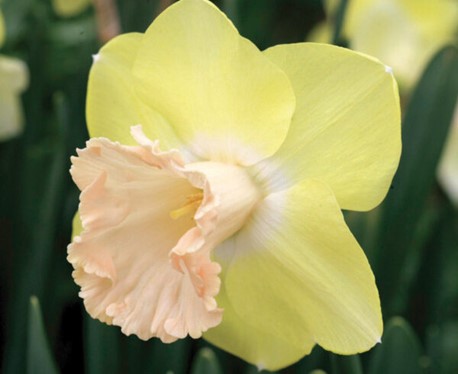
Division 2: Large Cup Division
Exemplified by Narcissus ‘Pride of Lions’ Y-O
‘Pride of Lions’ has one flower on a stem and the cup is more than 1/3 (but less than equal) the length of the petals. ‘Pride of Lions’ was registered in 2019. It has yellow petals and an orange cup with a red frilled edge.
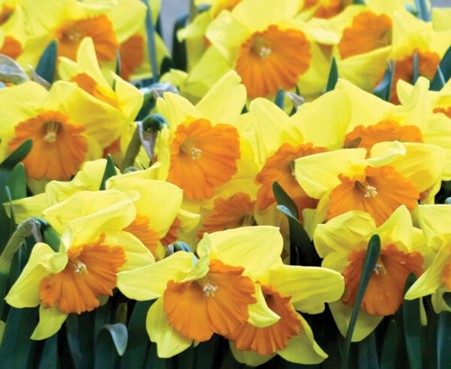
Division 3: Small-Cup Division
Exemplified by Narcissus ‘Polar Ice’ W-W
Next, we have the daffodil ‘Polar Ice’. This historic daffodil was registered before 1936 in the Netherlands. Opposite the Large Cup Division, the Small Cup division has a cup that is less than 1/3 the length of the petals. The petals of this daffodil are a brilliant white and the tiny, ruffled cup is a bright yellow at first bloom and shifts to a pure white with a green center.
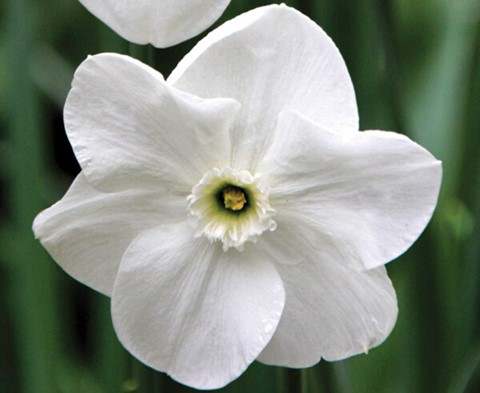
Division 4: Double Division
Exemplified by Narcissus ‘Bridal Crown’ W-Y
This daffodil was registered before 1949 and is considered a ‘Classic’ by the American Daffodil Society. The double division can have double petals or double the cup … or both! This causes the daffodil to appear more like a peony flower. This daffodil is mostly white, with bursts of warm yellow spilling out from the center along with a strong scent.
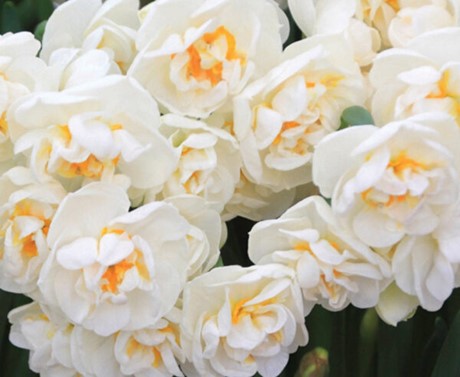
Division 5: Triandrus Division
Exemplified by Narcissus ‘Sunlight Sensation’ Y-Y
This miniature daffodil was registered in 2016. Division 5 daffodils have pendulous flowers, meaning that they look towards the ground. There are usually 3-5 flowers per stem. ‘Sunlight Sensation’ has yellow petals and corona and is sweetly scented.
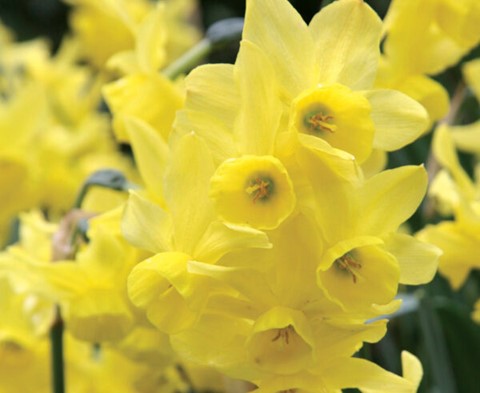
Division 6: Cyclamineus Division
Exemplified by Narcissus ‘Winter Waltz’ W-P
The daffodil ‘Winter Waltz’ was registered in 1988. Typically, daffodils in this division are early bloomers with reflexed petals (meaning the petals lay away from the cup) and the flower is at an acute angle towards the stem. This example has white reflexed petals with a corona that begins a buff color and gradually moves to a pinkish apricot.
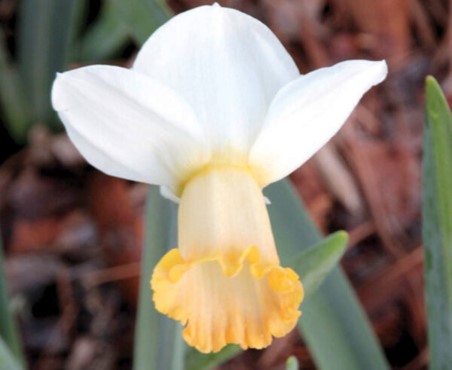
Division 7: Jonquilla Division
Exemplified by Narcissus ‘Hillstar’ YYW-YWW
The cultivar ‘Hillstar’ was registered in 1979. The petals are a bright lemon yellow with a white base that may extend farther down. The corona is ribbed and funnel shaped; mostly buff with some variation. Daffodils in this division are more commonly seen in the South as they handle the warmer winters better than other divisions.
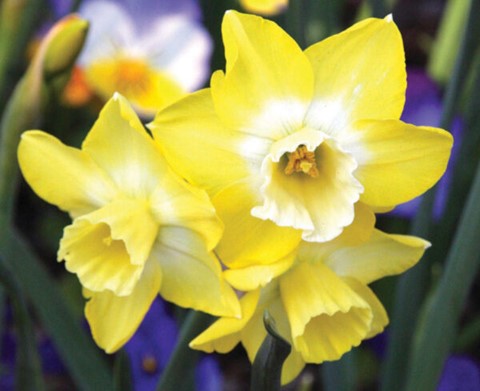
Are daffodils the same as jonquils?
Possibly! Jonquils are one of the thirteen divisions of daffodils as classified by the Royal Horticultural Society. That means a Jonquil is a Daffodil, but a Daffodil is not necessarily a Jonquil. The Royal Horticultural Society first began developing its classification system for cultivars in 1884, marking each division by distinctions such as the size and shape of its petals and corona, the number of flowers per stem, the number of petals, and whether they push forward or reflex backwards, and even the presence of fragrance. Just remember that all jonquils are daffodils but not all daffodils are jonquils!
Division 8: Tazetta Division
Exemplified by Narcissus ‘Geranium’ W-O
This is a historic daffodil and was registered before 1930. The petals are ivory white and very broad (almost square) while the cup is a yellow-orange shallow bowl shape. True to its division, it has multiple flowers on each thick stem (anywhere from two to twenty!).
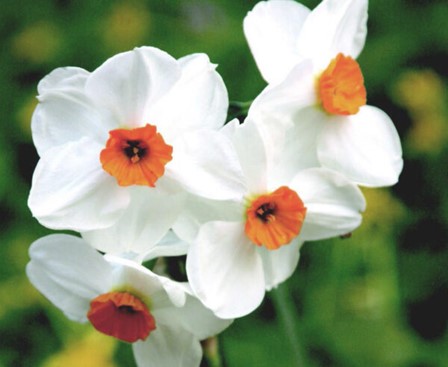
Division 9: Poeticus Division
Exemplified by Narcissus ‘Actaea’ W-YYR
This historic daffodil was registered before 1919. Like all other cultivars in this division, it has bright white petals with a very small and shallow cup that goes from green-yellow to red at the tip.
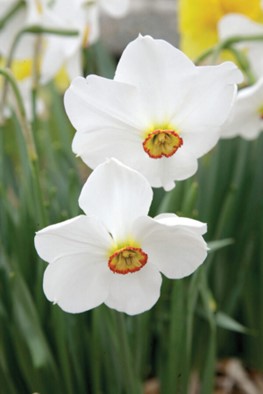
Division 10: Bulbocodium Division
Exemplified by Narcissus ‘Oxford Gold’ Y-Y
This daffodil was registered in 2007. The appearance of bulbocodium differs from that of the other divisions in that the petals are insignificant when compared to the cup. This cultivar is classed as a miniature, meaning its flower is no larger than 1.97”. Both its large corona and tiny petals are a vivid yellow.
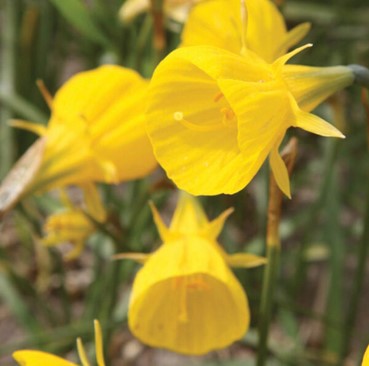
Division 11a: Split-Cupped Collar
Exemplified by Narcissus ‘Electrus’ W-GPP
Division 11 is split into two groups – the Split-Cupped Collar and the Split-Cupped Papillon (pronounced Pap-ee-on.)
The 11a Split-Cupped Collar daffodil is ‘Electrus.’ This daffodil was registered in 2001. What makes collar different from papillon is that the corona (cup segments) is opposite of the perianth (petal segments). This cultivar has white petals and striking orange-pink cup segments.
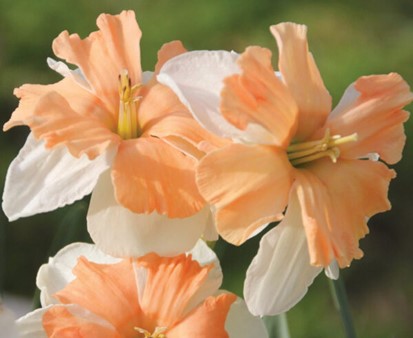
Division 11b: Split-Cupped Papillon Division
Exemplified by ‘Dolly Mollinger’ W-O/W
Division 11 is split into two groups – the Split-Cupped Collar and the Split-Cupped Papillon (pronounced Pap-ee-on.)
The 11b Split-Cupped Papillon daffodil is ‘Dolly Mollinger.’ This classic daffodil was introduced in 1958. The papillon daffodils have a corona (cup segments) that are alternate to the perianth (petal segments.) This cultivar has bright white petals and the alternating corona segments have a warm orange base which spreads into white edges.
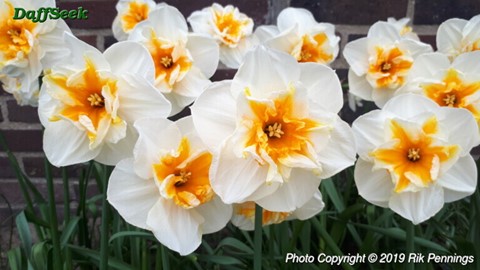
Division 12: Miscellaneous Division
Exemplified by Narcissus ‘Tiny Bubbles’ Y-Y
Daffodils in this division are often hybrids between other divisions. In this container we have ‘Tiny Bubbles’. This miniature daffodil was registered in 2009. It is star shaped with all yellow blooms facing down.
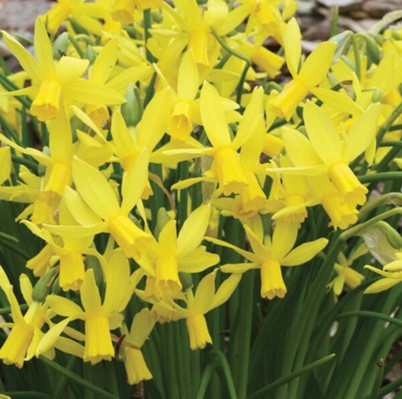
Division 13: Daffodils Distinguished Soley by Botanical Name
Exemplified by Narcissus pseudonarcissus (also called “Lent Lily”)
The last division is division 13, daffodils distinguished solely by botanical name. Narcissus pseudonarcissus is a native wildflower in England and described in botanical records as early as the 16th century. Because this is a wild daffodil (not a cultivar), the American Daffodil Society does not list a color code.
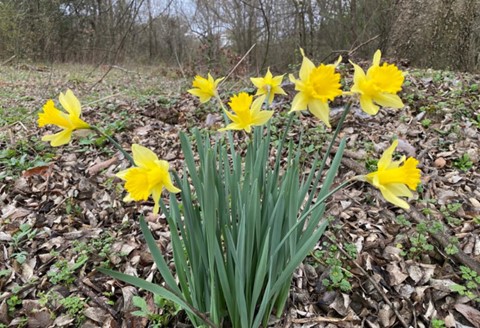
Where do daffodils grow?
Daffodils can grow in all North America except South Florida or other areas that don’t experience a cold period.
There are plenty of daffodils to see at Powell Gardens! In addition to more than 100,000 daffodils emerging on the East Lawn, look for a daffodil spiral in the Heartland Garden and search for early spring blooms in the David T. Beals III Woodland and Stream Garden. Learn about all thirteen divisions of daffodils below and in a display near the Visitor Center.
How to Grow Daffodils
Daffodils are one of the easiest bulbs to grow so they are great for beginners! Daffodils prefer full sun but because of their early flowering, you can still plant them underneath deciduous trees as the leaves have yet to bud out by the time the daffodils are done growing. They do need well-drained soil so as not to rot so hillsides and raised beds are the best locations. When planting, ensure that the point of the bulb is facing the sky. The point is the top of the daffodil. Dig a hole 2-3 times the height of the daffodil bulb (best done in the fall before the ground freezes) and plant the bulb.
Are Daffodils Perennials? How can I make them come back?
Daffodils are some of the earliest spring flowering bulbs and are perennial, meaning they regularly come back year after year.
When you visit Powell Gardens, you may see stalks and leaves without blooms. This is on purpose! After the daffodils bloom, leaving the stalks and blooms for several weeks allows the plant to store energy for next year’s blooms. While not the most visually appealing, this practice allows our daffodils to thrive in the following bloom season!
At home, you can replicate this practice by waiting to cut down daffodils when they finish blooming. As individual bulbs die, the plant produces offsets. After they’ve bloomed, remove the seedhead and leave the foliage for 6-weeks before cutting down.
Visit Daffodil at Powell Gardens
Daffodils are a welcome sign of spring. When you visit Powell Gardens (maybe during Daffodil Days, March 27-April 7), use this information or the daffodil digital tour available in Garden Explorer to enrich your experience. As Kansas City’s botanical garden, Powell Gardens is thrilled to connect you more deeply with the plants in our lives.
Related Posts

